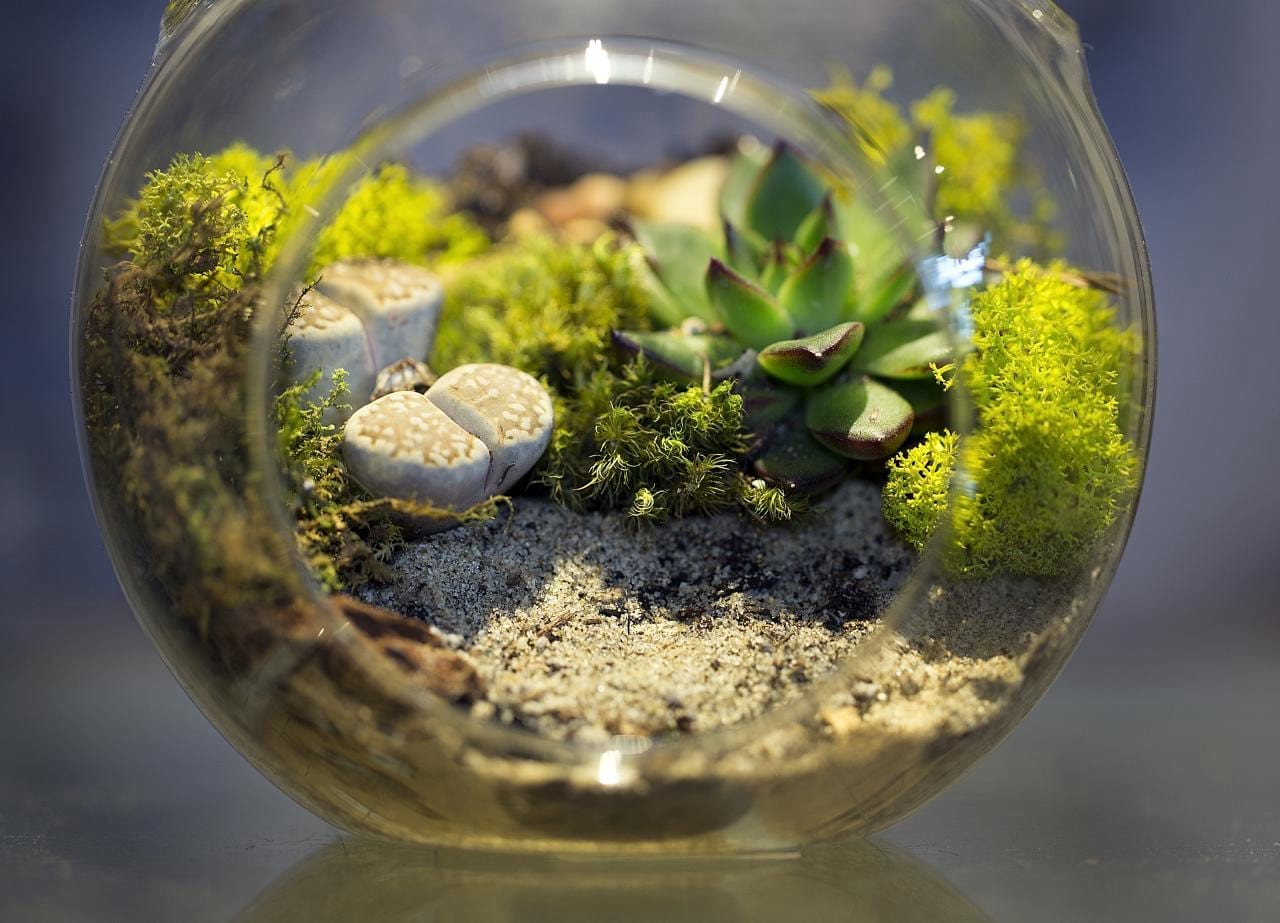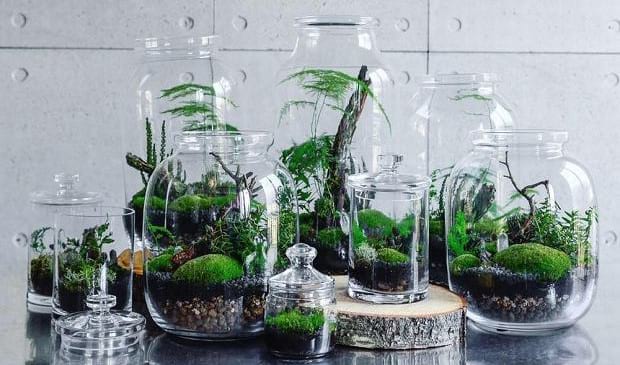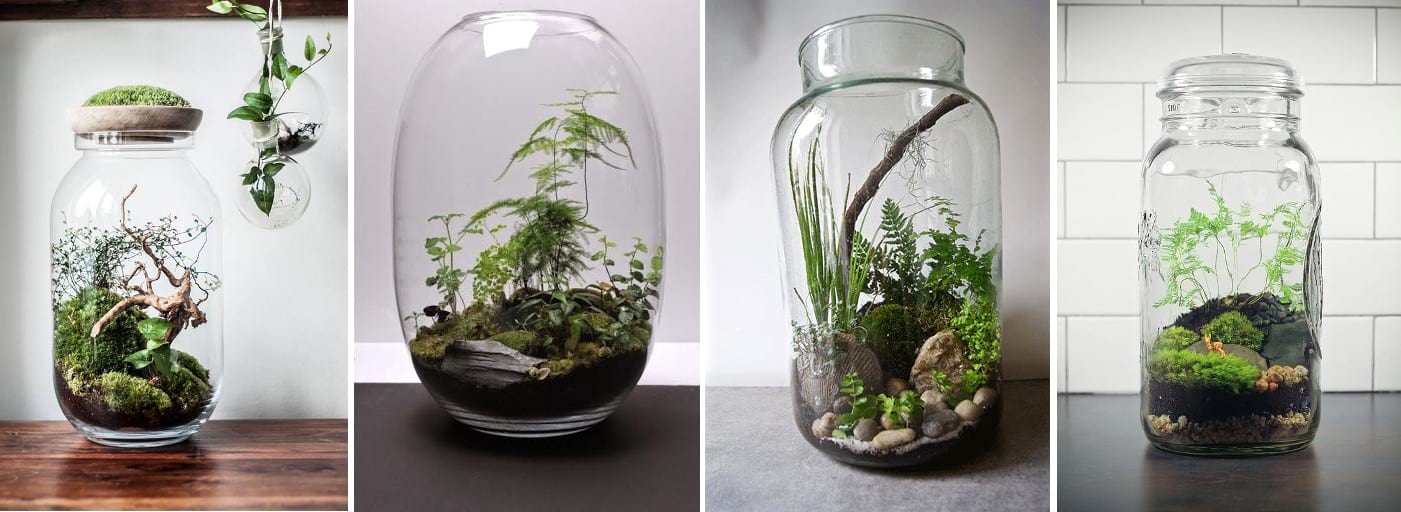A FOREST INSIDE A BOTTLE
We are increasingly on the lookout for plants which will not only decorate our homes but also be a become a design trend. Many catalogues, materials and displays feature green installations. In a bottled forest, everything looks and behaves like in a natural forest. All that changes is its scale.
Transporting a piece of forest to a glass container, vessel, bottle or jar is not a complex task. You need a lot of creativity, some manual skills and patience. Enclosed mini-gardens perfectly imitate the conditions of damp and slightly shady tropical forests. In time, a balanced ecology develops inside the corked bottle, and the miniature ecosystem within does not require any outside intervention, as the plants have everything they need to live – oxygen, carbon dioxide, a nutrient-rich floor and moisture, along with access to sunlight.

HOW DO I DO IT?
You need the right container. It could be a jar, vase, glass ball or large wine bottle. It is much harder to fit plants into a narrow-necked bottle, which is worth bearing in mind when choosing your container. Pour a layer of drainage material on the bottom of the container, this is very important to prevent water gathering. The gravel layer should be from 2 to 5cm thick, with powdered carbon (available from any chemist) sprinkled on top. Then add the properly prepared base or floor. This has to be permeable, and appropriate to the plants you want to grow in it. The floor layer can be of varied thickness, and you will get the best effect by forming a mini landscape with small elevations rather than a flat plain. After shaping the floor, it is time to add landscape features such as interesting stones, root fragments, twigs or seashells. Remember that these will help create the style of your garden, so go easy when choosing them.

Now to choose the plants – because of the highly beneficial conditions, plants grow quickly here, so it is best to use slow-growing species and select them so that they do not overrun one another. Plants growing in the same vessel should have similar requirements.

To create your own private, household forest in a glass vessel, use moss and small ferns (ribbon fern, adiantum) which is at home in these conditions. Other suitable and popular plants include cryptanthus, fittonia, gasteria, haworthia, maranta, episcia, spathyphyllum and selaginella. Insectivorous plants such as drosera and venus flytraps would also feel at home there. Another important matter is where to display your nature, the sides of the vessel act like a greenhouse and very quickly heat up when left in full sunlight, so it is best to find somewhere slightly shaded. If you have a garden in a wine fermentation flask, you can cork it up, but when water droplets appear on the sides you should uncork it to let it air.
And now it is time to feast your eyes on your creation 🙂
author: Barlinek Institute of Design
photos: Pinterest
